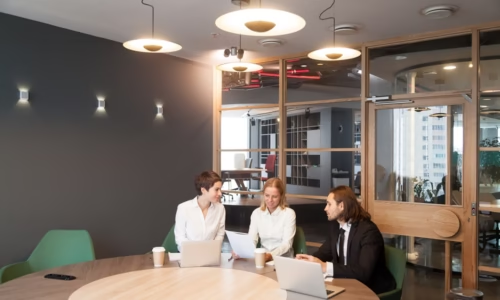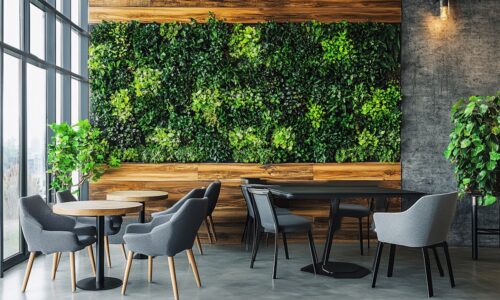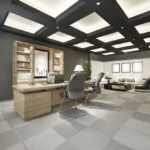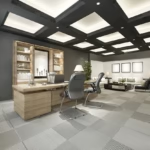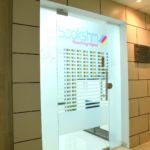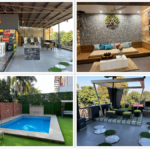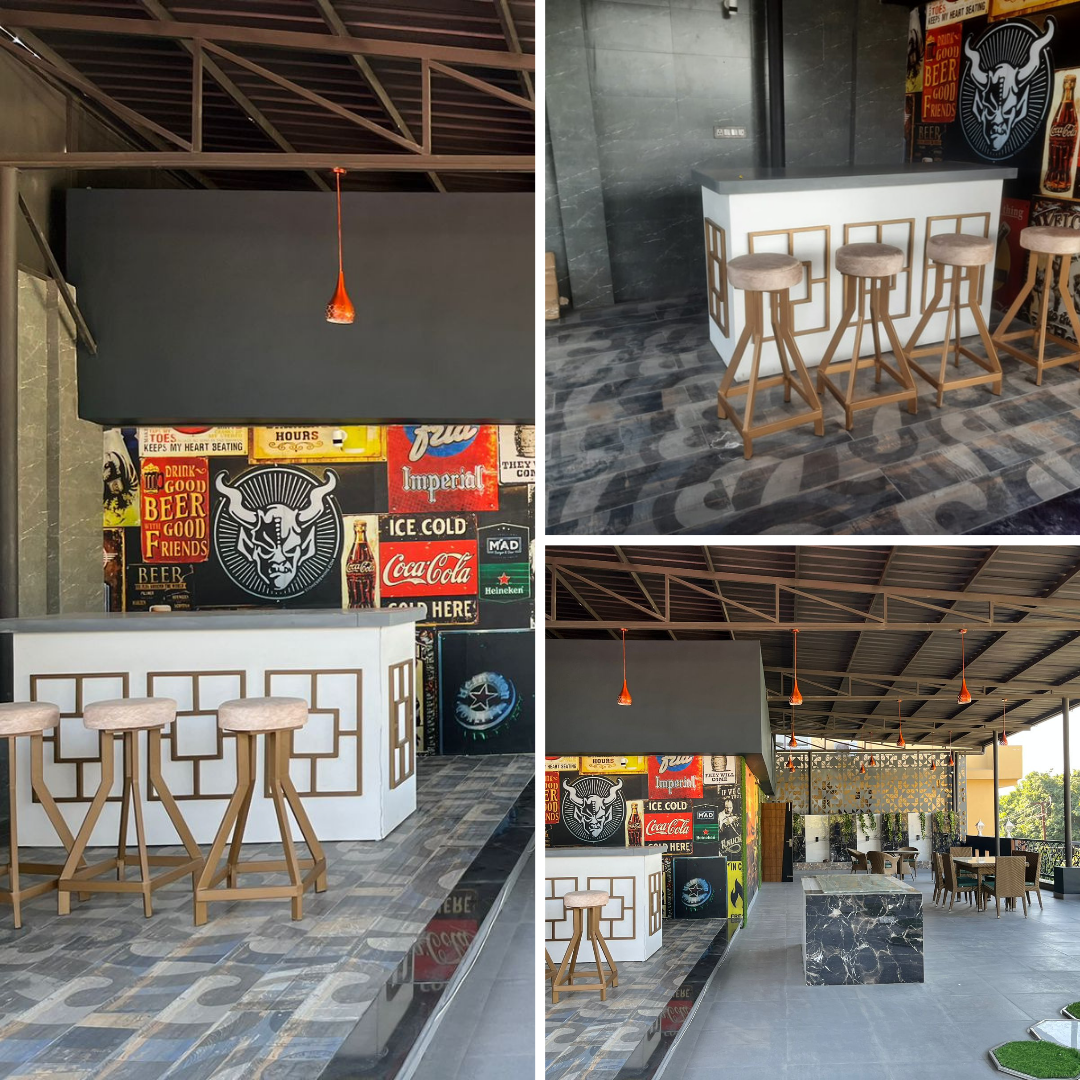Designing a modern office interior goes beyond selecting furniture or lighting. One of the most important elements that set the tone of the workspace is the flooring. Office flooring not only impacts the look and style of the workplace but also affects comfort, durability, maintenance, and even employee productivity. When businesses plan interiors, flooring is often a long-term investment that requires careful thought. The right flooring can create a professional environment, impress clients, and make employees feel comfortable.
Importance of Flooring in Office Interiors
Flooring is often overlooked during office design, but it plays a key role in the overall atmosphere. Imagine walking into an office with cracked tiles or stained carpets. It instantly creates a negative impression. On the other hand, sleek and well-maintained flooring reflects professionalism and modern design.
The right flooring also improves functionality. For example, an office with high foot traffic requires durable flooring. A space with a lot of collaborative areas may benefit from noise-reducing options like carpet tiles. Flooring also ties into safety, as non-slip surfaces are essential to prevent accidents.
Interior design is not only about appearance but also about improving usability and safety. Flooring is a big part of that balance.
Factors to Consider When Choosing Office Flooring
Before exploring different types of flooring, let us first understand the important factors you should keep in mind:
-
Durability – Offices face heavy foot traffic every day. Flooring must be able to withstand constant use without wearing out quickly.
-
Maintenance – Cleaning and maintaining flooring should be easy and cost-effective. Some materials require professional cleaning, while others are low-maintenance.
-
Noise Control – Offices with open layouts may need flooring that absorbs sound and reduces noise levels.
-
Design and Aesthetics – Flooring should align with the brand identity and modern office look.
-
Comfort – Employees spend long hours in offices. Comfortable flooring can improve their overall well-being.
-
Budget – Different flooring options come at different price points. It is important to choose one that balances cost and quality.
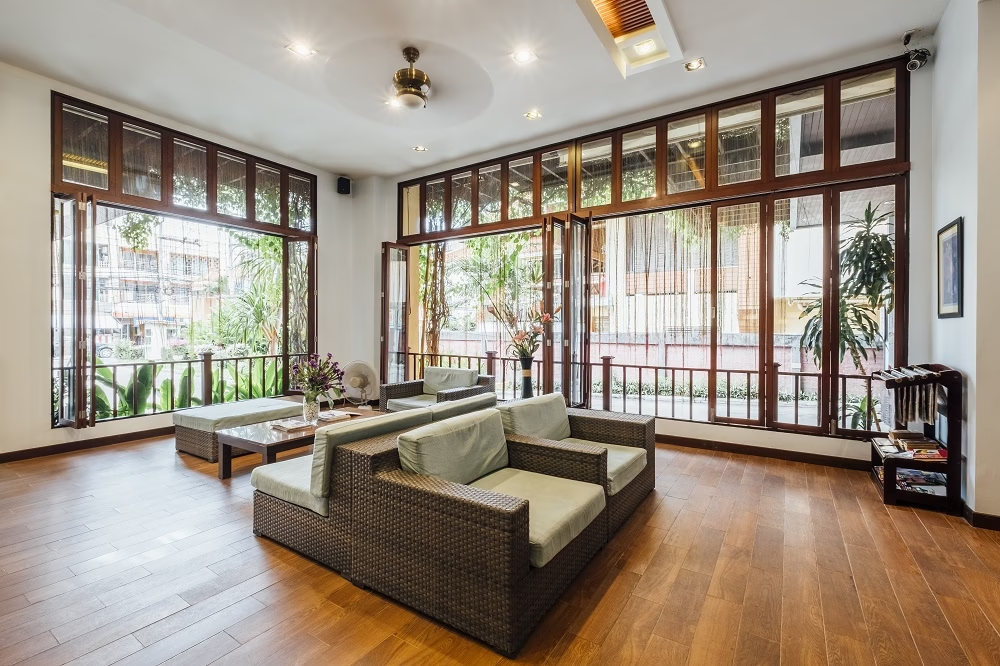
Top Flooring Options for Modern Office Interiors
There are many flooring choices available today. Below, we will go through the best ones for offices and explain their features in detail.
1. Carpet Tiles
Carpet tiles are one of the most popular choices for office interiors. Unlike traditional wall-to-wall carpets, carpet tiles come in small squares that can be installed easily.
Advantages of Carpet Tiles:
-
Excellent for noise reduction, which is important in busy offices.
-
Comfortable underfoot and provides warmth.
-
Easy to replace if one tile gets damaged, unlike full carpets.
-
Available in a wide range of colors and patterns.
Disadvantages of Carpet Tiles:
-
Can get stained easily if not maintained properly.
-
May not last as long as harder flooring materials.
Carpet tiles are best for offices with open layouts, meeting rooms, and creative spaces. They add a touch of coziness while maintaining professionalism.
2. Vinyl Flooring
Vinyl flooring has become a modern favorite for office spaces due to its durability and design flexibility. It comes in sheets, tiles, or planks and can even mimic the look of wood or stone.
Advantages of Vinyl Flooring:
-
Highly durable and resistant to scratches and stains.
-
Easy to clean and maintain.
-
Available in many designs, including wood-like or stone-like finishes.
-
Affordable compared to natural wood or stone.
Disadvantages of Vinyl Flooring:
-
Not as eco-friendly as natural materials.
-
Can get damaged by sharp objects if not careful.
Vinyl flooring is a smart choice for high-traffic areas such as reception areas, hallways, and cafeterias.
3. Hardwood Flooring
Hardwood flooring adds elegance and a timeless appeal to any office interior. It is often used in executive offices and boardrooms.
Advantages of Hardwood Flooring:
-
Classic and stylish look that adds value to interiors.
-
Durable when maintained properly.
-
Can be refinished to look new again.
Disadvantages of Hardwood Flooring:
-
Expensive compared to other options.
-
Susceptible to scratches, dents, and moisture damage.
-
Requires regular maintenance.
Hardwood flooring is ideal for offices that want a premium and professional look. It creates a warm and welcoming environment.
4. Laminate Flooring
Laminate flooring is a budget-friendly alternative to hardwood. It gives the appearance of wood but is made of synthetic materials.
Advantages of Laminate Flooring:
-
Affordable compared to real wood.
-
Resistant to scratches and stains.
-
Easy to install and maintain.
Disadvantages of Laminate Flooring:
-
Not as long-lasting as hardwood.
-
Can be damaged by water if not sealed properly.
Laminate is great for offices that want a wood-like look without the high cost. It works well in cabins, corridors, and conference rooms.
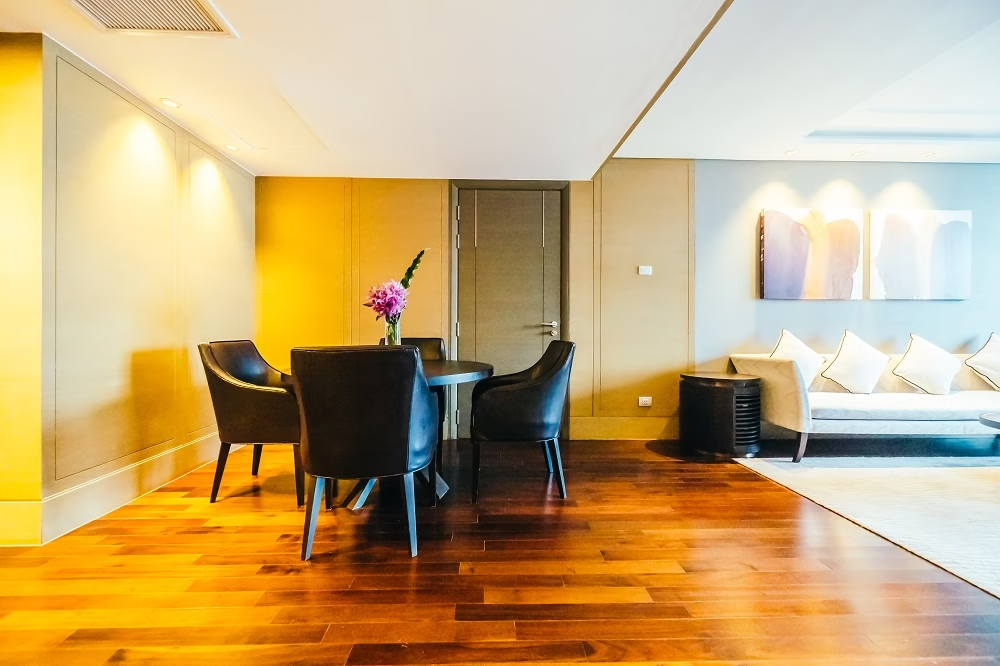
5. Polished Concrete Flooring
Polished concrete has become a modern trend in office design, especially in industrial-style interiors. It is both strong and stylish.
Advantages of Polished Concrete:
-
Extremely durable and long-lasting.
-
Minimal maintenance required.
-
Gives a sleek, modern, and industrial look.
-
Can be customized with stains and finishes.
Disadvantages of Polished Concrete:
-
Hard underfoot, which may be uncomfortable for long hours.
-
Can feel cold without rugs or carpets.
Polished concrete is best suited for startups, tech companies, and creative agencies that prefer a minimalistic design.
6. Ceramic or Porcelain Tiles
Ceramic and porcelain tiles are common flooring choices that offer both durability and variety.
Advantages of Tiles:
-
Very strong and resistant to wear.
-
Easy to clean and maintain.
-
Wide range of designs and colors available.
-
Water-resistant, making them suitable for kitchen and bathroom areas.
Disadvantages of Tiles:
-
Hard surface may feel uncomfortable to walk on for long hours.
-
Can become slippery if not treated with anti-slip coating.
Tiles are great for lobbies, reception areas, and office bathrooms. They offer a clean and polished appearance.
7. Rubber Flooring
Rubber flooring is an underrated option but highly practical for certain office setups.
Advantages of Rubber Flooring:
-
Provides excellent slip resistance.
-
Comfortable and soft underfoot.
-
Noise absorbing and easy to clean.
Disadvantages of Rubber Flooring:
-
Limited design options compared to vinyl or carpet.
-
Can get discolored with sunlight exposure.
Rubber flooring is commonly used in gyms, hospitals, and offices where safety and comfort are priorities.
Comparison Table of Office Flooring Options
| Flooring Type | Durability | Maintenance | Comfort | Noise Reduction | Cost | Best For |
|---|---|---|---|---|---|---|
| Carpet Tiles | Medium | Moderate | High | High | Moderate | Open offices, meeting rooms |
| Vinyl Flooring | High | Easy | Medium | Moderate | Affordable | Reception, hallways, cafeterias |
| Hardwood Flooring | High | Regular | Medium | Low | Expensive | Executive offices, boardrooms |
| Laminate Flooring | Medium | Easy | Medium | Low | Low | Cabins, corridors, conference rooms |
| Polished Concrete | Very High | Very Easy | Low | Low | Moderate | Startups, creative spaces |
| Ceramic/Porcelain Tiles | High | Easy | Low | Low | Moderate | Lobbies, kitchens, bathrooms |
| Rubber Flooring | Medium | Easy | High | High | Moderate | Gyms, safety-focused offices |
Choosing the Right Flooring for Your Office
Every office is different, and the right flooring option depends on your unique needs. For example, if your office is in a creative industry, carpet tiles or polished concrete may work best. If you want a premium look for client-facing spaces, hardwood flooring is ideal. For high-traffic areas, vinyl or tiles are more practical.
It is also wise to consider sustainability. Some flooring options like wood or rubber can be eco-friendly if sourced responsibly. According to Wikipedia, sustainable design practices focus on minimizing environmental impact while maintaining functionality.
Also Read:
- What Is a Mood Board in Interior Design?
- What Is Modern Classic Interior Design?
- What is Green Interior Design?
- What Are the Different Materials Used for Interior Design?
- Is Interior Architecture the Same as Interior Design?
Final Thoughts
Flooring is not just a surface to walk on; it is a core element of modern office interiors. The best flooring option should align with your office style, budget, and functionality needs. Carpet tiles offer comfort and noise reduction, vinyl provides versatility and durability, while hardwood adds elegance. Polished concrete creates a modern industrial vibe, while tiles and rubber provide practical benefits.
When planning your office design, think about both aesthetics and practicality. A well-chosen flooring option can transform your workplace, create a positive impression, and contribute to employee comfort and productivity.

